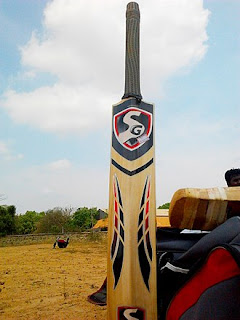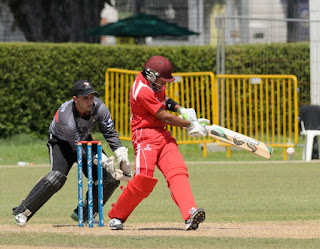CRICKET EQUIPMENTS
CRICKET EQUIPMENTS
1. BAT
A cricket bat is a specialised piece of equipment used by batsmen in the sport of cricketto hit the ball, typically consisting of a cane handle attached to a flat-fronted willow-wood blade. The length of the bat may be no more than 38 inches (965 mm) and the width no more than 4.25 inches (108 mm). Its use is first mentioned in 1624. Since 1979, a rule change stipulated that bats can only be made from wood.
2. Ball
A cricket ball is a hard, solid ball used to play cricket. A cricket ball consists of cork covered by leather, and manufacture is regulated by cricket law at first-class level. The manipulation of a cricket ball, through movement in the air, and off the ground, is influenced by the condition of the bowler and the pitch, while working on the cricket ball to obtain optimum condition is a key role of the fielding side. The cricket ball is the principal manner through which the batsman scores runs, by manipulating the ball into a position where it would be safe to take a run, or by directing the ball through or over the boundary.
In day Test cricket, professional domestic games that spread over a multitude of days, and almost the entirety of amateur cricket, the traditional red cricket ball is normally used. In many one day cricket matches, a white ball is used instead in order to remain visible under floodlights, and since 2010, pink has been introduced to contrast with players' white clothing and for improved night visibility during day/night Test matches.[1] Training balls of white, red and pink are also common, and tennis balls and other similar-sized balls can be used for training or informal cricket matches. During cricket matches, the quality of the ball changes to a point where it is no longer usable, and during this decline its properties alter and thus can influence the match. Altering the state of the cricket ball outside the permitted manners designated in the rules of cricket is prohibited during a match, and so-called "ball tampering" has resulted in numerous controversies.
Injuries and fatalities have been caused by cricket balls during matches.[2] The hazards posed by cricket balls were a key motivator for the introduction of protective equipment.
3. STUMPS
The stumps are three vertical posts which support two bails.[1] The stumps and bails are usually made of wood, most commonly ash,[2] and together form a wicket at each end of the pitch.
The overall width of each wicket is 9 inches (22.9 cm). Each stump is 28 inches (71.1 cm) tall with maximum and minimum diameters of 11⁄2 inches (3.81 cm) and 13⁄8 inches (3.49 cm). They have a spike at one end for inserting into the ground, and the other end has a U-shaped 'through groove' to provide a resting place for the bails.[3] In junior cricket the items have lesser dimensions.
Each stump is referred to by a specific name:
- Off stump[4] is the stump on the off side of the wicket (the same side as the batsman's bat).
- Middle stump[5] is the centre stump, the middle of the three stumps.
- Leg stump[6] is the stump on the on side of the wicket (the same side as the batsman's legs).
These names are relative to the batsman, so a right-handed batsman's leg stump becomes the off stump when a left-handed player is batting.
In modern professional play, the stumps are often branded with a sponsor's logo. Although they are too far away from spectators to be seen, such logos are visible on television coverage.
For professional matches, often one or more of the stumps is hollow and contains a small television camera. This is aligned vertically, but can view through a small window on the side of the stump via a mirror. The so-called stump-cam gives a unique view of play for action replays, particularly when a batsman is bowled.
A recent innovation are stumps and bails embedded with red LEDs, which flash when they are completely dislodged. Invented by an Australian engineer and trademarked as "Zing Bails", they were designed to aid both umpires with run-out or stumping decisions as well as provide distinctive images to television coverage during day-night matches. LED stumps were first used at the 2014 ICC World Twenty20, and have since become commonplace in major white-ball matches like ODIs or franchise T20 leagues. [7] They have also been used in day/night Test matches.





Comments
Post a Comment